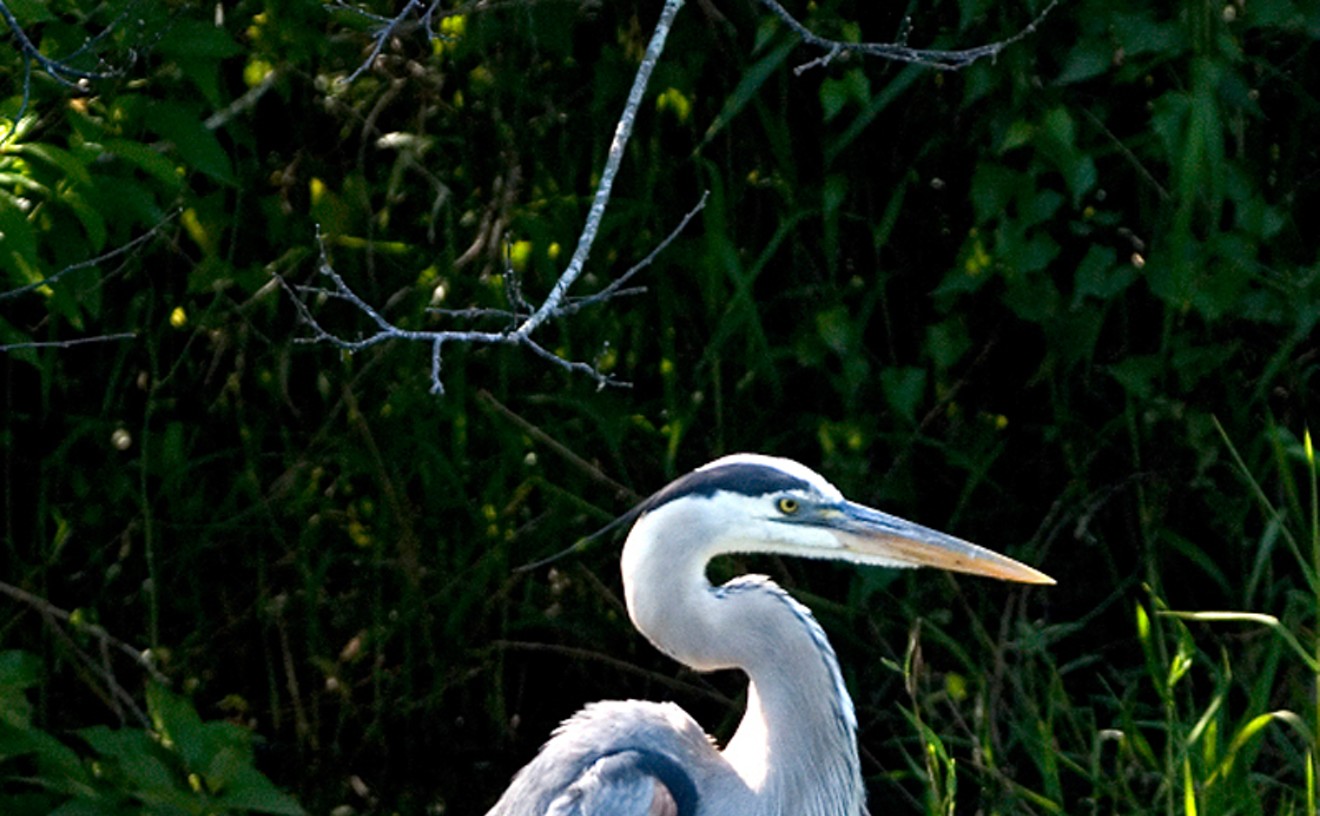
Readers Choice: Sans Souci Tennis Center
Actors' Playhouse
Floyd Collins
Comic Potential
By Michael Carlebach
Smithsonian Institution Press
280 Miracle Mile
Coral Gables
305-444-9293
www.actorsplayhouse.org
Such Stuff As We Are Made Of
Zeta (WZTA-FM 94.9)
Miami Light Project
Miami Heat
Overtown
Art Basel Miami Beach
Bird Road at the Palmetto Expressway
State Road 836
August
Wolfson Campus
Crandon Marina
PS 742
WSVN-TV (Channel 7)
Actors' Playhouse
Miracle Theatre
WPLG-TV (Channel 10)
February 9, 2003
The Creek Drank the Cradle
February 9, 2003
The Creek Drank the Cradle
This Is What It Sounds Like When Youre Dead
Frank Consola
WDNA-FM (88.9)
WKAT-AM (1360), 7:00 to 8:00 p.m.
Weekdays noon to 2:00 p.m.
WCMQ-FM Clsica 92 (92.3)
WLRN-FM (91.3)
This Is What It Sounds Like When Youre Dead
Frank Consola
WDNA-FM (88.9)
WKAT-AM (1360), 7:00 to 8:00 p.m.
Weekdays noon to 2:00 p.m.
WCMQ-FM Clsica 92 (92.3)
WLRN-FM (91.3)
BEST BREAD
BEST BREAKFAST SPECIAL
BEST CHINESE RESTAURANT
BEST CHOCOLATE
Aventura Mall
BEST COFFEEHOUSE
BEST EXPENSIVE ITALIAN RESTAURANT
BEST NEIGHBORHOOD RESTAURANT
BEST NICARAGUAN RESTAURANT
BEST PLACE TO DINE ALONE
BEST PUERTO RICAN RESTAURANT
BEST RESTAURANT FOR GLUTTONS
Bizcaya Grill
Ritz-Carlton Coconut Grove
TO THE TOP
Nemo
Nemo/Shoji Sushi/Big Pink
Gardner's Markets at Pinecrest
Nemo
Aventura Mall
Bizcaya Grill
Ritz-Carlton Coconut Grove
Gardner's Markets at Pinecrest
Nemo/Shoji Sushi/Big Pink
Trail Animal Clinic
Bal Harbour Shops
Bal Harbour Shops
Trail Animal Clinic
Everglades National Park
3200 SW 114th Avenue
West Miami-Dade
Coconut Grove
Everglades National Park
3200 SW 114th Avenue
West Miami-Dade
Doral Blue Monster
Doral Golf Resort and Spa
Coconut Grove
Miami Beach Marina
University Park Campus
Miami Beach
Doral Blue Monster
Doral Golf Resort and Spa
BEST POWERBOAT RENTAL
Miami Beach Marina
University Park Campus
Miami Beach
555 Arthur Godfrey Road
Miami Beach
305-695-7400
Miami Beach
Don Carters Kendall Lanes
Prof. Brian Peterson
American Road Collection
October 18, 2002
Fontainebleau Hilton
Miami-Dade County Department of Planning and Zoning
Wolfson Campus
Florida Turnpike
Such Stuff As We Are Made Of
Florida Turnpike
Miami Heat
Actors' Playhouse
Miracle Theatre
October 18, 2002
Crandon Marina
Miami Light Project
WPLG-TV (Channel 10)
Overtown
Prof. Brian Peterson
280 Miracle Mile
Coral Gables
305-444-9293
www.actorsplayhouse.org
Comic Potential
555 Arthur Godfrey Road
Miami Beach
305-695-7400
PS 742
Actors' Playhouse
Floyd Collins
State Road 836
August
Bird Road at the Palmetto Expressway
By Michael Carlebach
Smithsonian Institution Press
Miami-Dade County Department of Planning and Zoning
WSVN-TV (Channel 7)
Art Basel Miami Beach
Zeta (WZTA-FM 94.9)
Miami Beach
American Road Collection
Fontainebleau Hilton
Don Carters Kendall Lanes
BEST NEIGHBORHOOD BAR/SOUTH
MODEL-WATCH
Tuesday nights
Foxs Sherron Inn
Doraku
The Shelborne Beach Resort
Hoy Como Ayer
Hotel Astor
The Shelborne Beach Resort
Hoy Como Ayer
Doraku
Hotel Astor
Foxs Sherron Inn
Tuesday nights
Actors' Playhouse
Floyd Collins
Comic Potential
By Michael Carlebach
Smithsonian Institution Press
280 Miracle Mile
Coral Gables
305-444-9293
www.actorsplayhouse.org
Such Stuff As We Are Made Of
Zeta (WZTA-FM 94.9)
Miami Light Project
Miami Heat
Overtown
Art Basel Miami Beach
Bird Road at the Palmetto Expressway
State Road 836
August
Wolfson Campus
Crandon Marina
PS 742
WSVN-TV (Channel 7)
Actors' Playhouse
Miracle Theatre
WPLG-TV (Channel 10)
February 9, 2003
The Creek Drank the Cradle
February 9, 2003
The Creek Drank the Cradle
This Is What It Sounds Like When Youre Dead
Frank Consola
WDNA-FM (88.9)
WKAT-AM (1360), 7:00 to 8:00 p.m.
Weekdays noon to 2:00 p.m.
WCMQ-FM Clsica 92 (92.3)
WLRN-FM (91.3)
This Is What It Sounds Like When Youre Dead
Frank Consola
WDNA-FM (88.9)
WKAT-AM (1360), 7:00 to 8:00 p.m.
Weekdays noon to 2:00 p.m.
WCMQ-FM Clsica 92 (92.3)
WLRN-FM (91.3)
BEST BREAD
BEST BREAKFAST SPECIAL
BEST CHINESE RESTAURANT
BEST CHOCOLATE
Aventura Mall
BEST COFFEEHOUSE
BEST EXPENSIVE ITALIAN RESTAURANT
BEST NEIGHBORHOOD RESTAURANT
BEST NICARAGUAN RESTAURANT
BEST PLACE TO DINE ALONE
BEST PUERTO RICAN RESTAURANT
BEST RESTAURANT FOR GLUTTONS
Bizcaya Grill
Ritz-Carlton Coconut Grove
TO THE TOP
Nemo
Nemo/Shoji Sushi/Big Pink
Gardner's Markets at Pinecrest
Nemo
Aventura Mall
Bizcaya Grill
Ritz-Carlton Coconut Grove
Gardner's Markets at Pinecrest
Nemo/Shoji Sushi/Big Pink
Trail Animal Clinic
Bal Harbour Shops
Bal Harbour Shops
Trail Animal Clinic
Everglades National Park
3200 SW 114th Avenue
West Miami-Dade
Coconut Grove
Everglades National Park
3200 SW 114th Avenue
West Miami-Dade
Doral Blue Monster
Doral Golf Resort and Spa
Coconut Grove
Miami Beach Marina
University Park Campus
Miami Beach
Doral Blue Monster
Doral Golf Resort and Spa
BEST POWERBOAT RENTAL
Miami Beach Marina
University Park Campus
Miami Beach
555 Arthur Godfrey Road
Miami Beach
305-695-7400
Miami Beach
Don Carters Kendall Lanes
Prof. Brian Peterson
American Road Collection
October 18, 2002
Fontainebleau Hilton
Miami-Dade County Department of Planning and Zoning
Wolfson Campus
Florida Turnpike
Such Stuff As We Are Made Of
Florida Turnpike
Miami Heat
Actors' Playhouse
Miracle Theatre
October 18, 2002
Crandon Marina
Miami Light Project
WPLG-TV (Channel 10)
Overtown
Prof. Brian Peterson
280 Miracle Mile
Coral Gables
305-444-9293
www.actorsplayhouse.org
Comic Potential
555 Arthur Godfrey Road
Miami Beach
305-695-7400
PS 742
Actors' Playhouse
Floyd Collins
State Road 836
August
Bird Road at the Palmetto Expressway
By Michael Carlebach
Smithsonian Institution Press
Miami-Dade County Department of Planning and Zoning
WSVN-TV (Channel 7)
Art Basel Miami Beach
Zeta (WZTA-FM 94.9)
Miami Beach
American Road Collection
Fontainebleau Hilton
Don Carters Kendall Lanes
BEST NEIGHBORHOOD BAR/SOUTH
MODEL-WATCH
Tuesday nights
Foxs Sherron Inn
Doraku
The Shelborne Beach Resort
Hoy Como Ayer
Hotel Astor
The Shelborne Beach Resort
Hoy Como Ayer
Doraku
Hotel Astor
Foxs Sherron Inn
Tuesday nights
